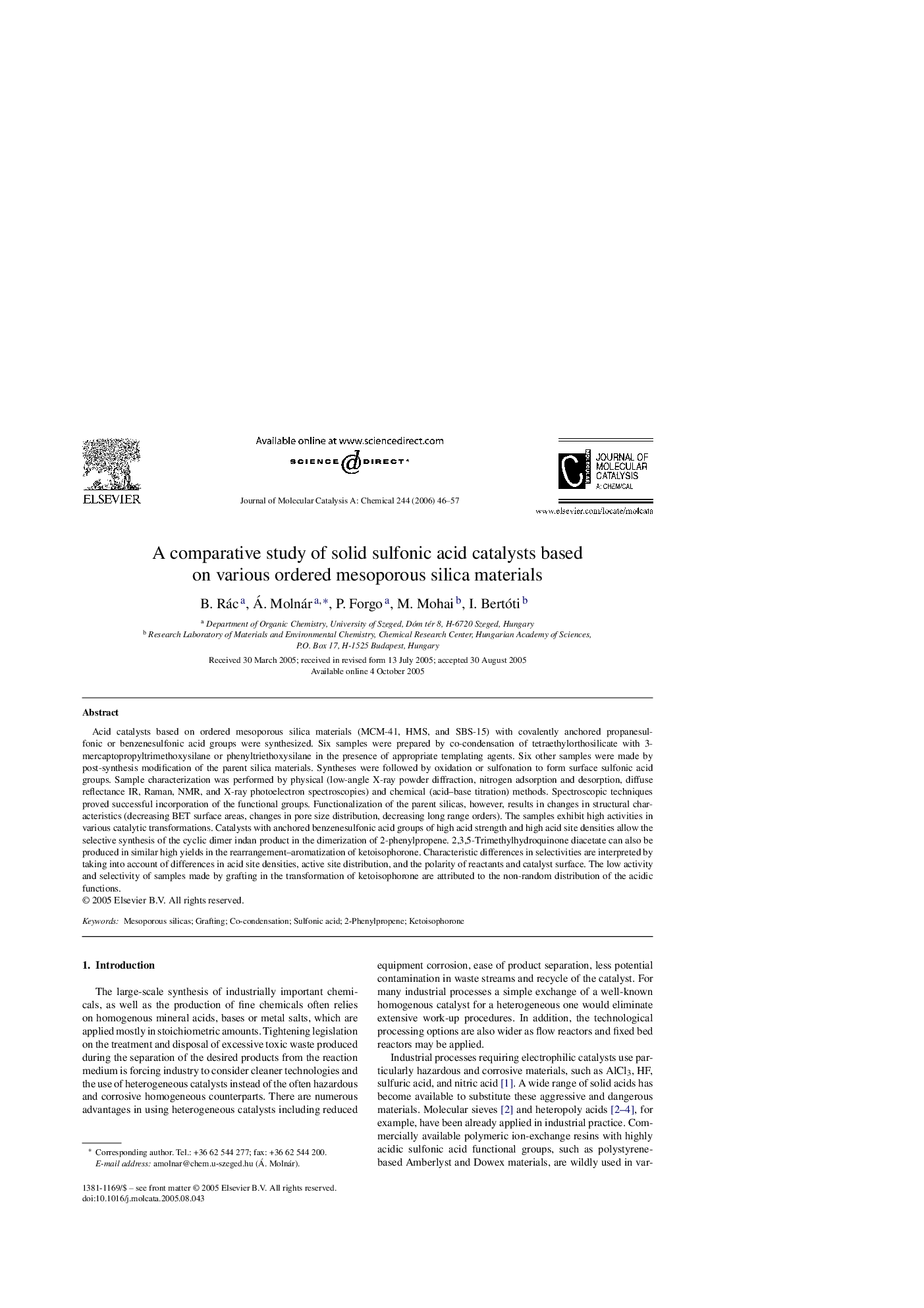| کد مقاله | کد نشریه | سال انتشار | مقاله انگلیسی | نسخه تمام متن |
|---|---|---|---|---|
| 69092 | 48530 | 2006 | 12 صفحه PDF | دانلود رایگان |

Acid catalysts based on ordered mesoporous silica materials (MCM-41, HMS, and SBS-15) with covalently anchored propanesulfonic or benzenesulfonic acid groups were synthesized. Six samples were prepared by co-condensation of tetraethylorthosilicate with 3-mercaptopropyltrimethoxysilane or phenyltriethoxysilane in the presence of appropriate templating agents. Six other samples were made by post-synthesis modification of the parent silica materials. Syntheses were followed by oxidation or sulfonation to form surface sulfonic acid groups. Sample characterization was performed by physical (low-angle X-ray powder diffraction, nitrogen adsorption and desorption, diffuse reflectance IR, Raman, NMR, and X-ray photoelectron spectroscopies) and chemical (acid–base titration) methods. Spectroscopic techniques proved successful incorporation of the functional groups. Functionalization of the parent silicas, however, results in changes in structural characteristics (decreasing BET surface areas, changes in pore size distribution, decreasing long range orders). The samples exhibit high activities in various catalytic transformations. Catalysts with anchored benzenesulfonic acid groups of high acid strength and high acid site densities allow the selective synthesis of the cyclic dimer indan product in the dimerization of 2-phenylpropene. 2,3,5-Trimethylhydroquinone diacetate can also be produced in similar high yields in the rearrangement–aromatization of ketoisophorone. Characteristic differences in selectivities are interpreted by taking into account of differences in acid site densities, active site distribution, and the polarity of reactants and catalyst surface. The low activity and selectivity of samples made by grafting in the transformation of ketoisophorone are attributed to the non-random distribution of the acidic functions.
Figure optionsDownload as PowerPoint slide
Journal: Journal of Molecular Catalysis A: Chemical - Volume 244, Issues 1–2, 1 February 2006, Pages 46–57